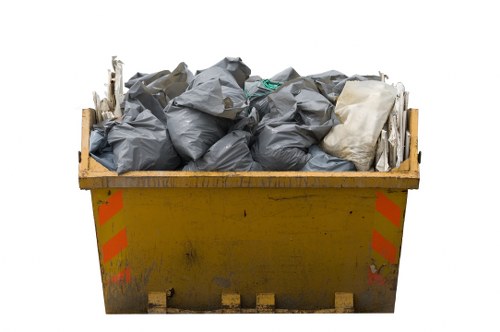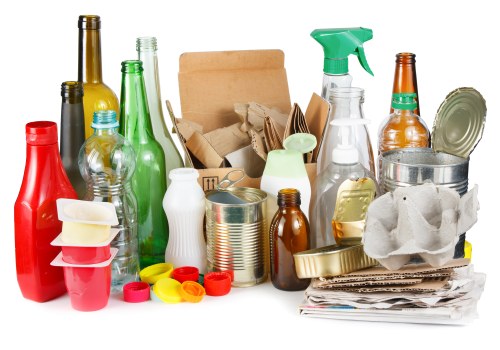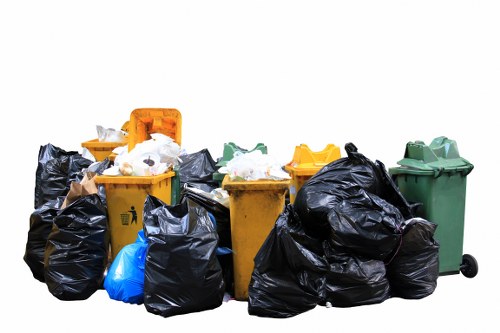Sofa Removal in White Goods Recycle
Why Recycle Your Sofa?

Recycling your sofa is a significant step towards environmental sustainability. Old sofas often contain materials that are not biodegradable, such as foam, wood, and synthetic fabrics. By opting for sofa removal in white goods recycle services, you ensure that these materials are processed responsibly, reducing the environmental footprint.
Moreover, recycling helps in conserving natural resources. Manufacturing new furniture requires raw materials like wood and metals, which contribute to deforestation and depletion of mineral resources. By recycling your sofa, you contribute to the reduction of demand for these virgin materials.
Additionally, recycling supports the economy by creating jobs in the recycling industry. It promotes a circular economy where products are reused and recycled, fostering sustainable economic growth.
Environmental Benefits

One of the primary environmental benefits of sofa recycling is the reduction of landfill waste. Sofas are bulky items that take up significant space in landfills, and their decomposition can release harmful chemicals into the soil and groundwater.
Recycling also minimizes greenhouse gas emissions. The production of new furniture emits carbon dioxide and other greenhouse gases. By recycling, you help decrease the overall carbon footprint associated with furniture manufacturing.
Furthermore, recycling promotes the reuse of materials, which reduces the need for energy-intensive processes required to produce new materials from scratch. This conservation of energy contributes to a more sustainable environment.
Economic Advantages

Beyond environmental benefits, recycling your sofa offers economic advantages. It can be a cost-effective solution compared to purchasing new furniture. Recycling services often charge less for removal and disposal than the cost of buying and transporting new sofas.
Additionally, some recycling programs offer incentives or discounts for using their services. These financial benefits make sofa recycling an appealing option for budget-conscious consumers.
Moreover, by supporting the recycling industry, you are contributing to job creation and economic growth. The recycling sector relies on a steady supply of materials, and your participation helps sustain these economic activities.
How to Recycle Your Sofa

Recycling your sofa involves several steps to ensure that it is disposed of responsibly. The first step is to assess the condition of your sofa. If it is still in usable condition, consider donating it to charities or selling it second-hand. Donations help those in need and extend the life of your furniture.
If your sofa is no longer usable, contact a professional recycling service. Many companies specialize in furniture recycling and offer comprehensive removal services. They can efficiently dismantle and transport your sofa for proper recycling.
Alternatively, you can reach out to local waste management authorities to inquire about their furniture recycling programs. Many municipalities provide recycling services for large items, ensuring they are processed correctly.
Steps for Effective Sofa Removal

To ensure a smooth sofa removal process, follow these essential steps:
- Schedule a Pickup: Contact a reputable recycling service to arrange a convenient pickup time.
- Prepare the Sofa: Clean the sofa and remove any personal items. Disassemble it if necessary to facilitate transportation.
- Ensure Accessibility: Make sure that the sofa is easily accessible for the removal team, clearing any obstacles that might hinder the process.
- Verify Recycling Practices: Confirm that the service provider follows environmentally friendly recycling practices.
Choosing the Right Recycling Service

Selecting a reliable recycling service is crucial for effective sofa removal. Consider the following factors when making your choice:
- Reputation: Look for services with positive reviews and a proven track record in furniture recycling.
- Certifications: Ensure the company adheres to industry standards and holds relevant certifications for recycling practices.
- Cost: Compare pricing among different providers to find a service that offers value for money.
- Service Range: Choose a company that covers your area and offers additional services like pickup and transport.
White Goods and Furniture Recycling

Integrating sofa removal with white goods recycling streamlines the disposal process for multiple household items. White goods, including appliances like refrigerators and washing machines, often require specialized recycling methods. Combining their removal with sofa recycling services ensures that all bulky items are managed efficiently.
This integrated approach reduces the number of pickups needed, saving time and reducing transportation emissions. It also simplifies scheduling, making it more convenient for consumers to dispose of multiple items simultaneously.
Furthermore, specialized recycling centers are equipped to handle a variety of materials, ensuring that both white goods and furniture are processed appropriately.
Benefits of Combined Recycling Services

Opting for combined recycling services offers several advantages:
- Convenience: Handling multiple items in one service call saves time and effort.
- Cost-Effectiveness: Bundled services often come at a discounted rate compared to individual pickups.
- Comprehensive Recycling: Ensures that a wide range of materials is recycled correctly, promoting overall sustainability.
- Reduced Environmental Impact: Fewer transportation trips mean lower carbon emissions.
Tips for a Smooth Sofa Removal Process

To make the sofa removal process seamless, consider the following tips:
- Plan Ahead: Schedule your removal in advance to avoid last-minute hassles.
- Clear the Path: Ensure that the removal team has easy access to the sofa by clearing any obstacles.
- Communicate Clearly: Provide accurate information about the sofa's size and condition to the recycling service.
- Follow Up: Confirm the pickup details and ask for a receipt or confirmation of recycling.
Preparing Your Sofa for Recycling

Proper preparation of your sofa ensures efficient recycling. Start by cleaning the sofa to remove any dirt or stains. This makes it easier for the recycling team to handle and process the item.
Next, disassemble any removable parts, such as cushions, legs, or covers. This facilitates transportation and reduces the risk of damage during removal.
Finally, remove any non-recyclable components, like certain types of foam or synthetic fabrics, if possible. Consult with your recycling service for specific requirements.
Ensuring Efficient Pickup and Transport

Efficient pickup and transport are critical for successful sofa removal. Ensure that the recycling service has the necessary equipment and trained personnel to handle large and heavy furniture safely.
Proper transportation minimizes the risk of damage to your property and the sofa itself. It also ensures that the item is delivered to the recycling center promptly for processing.
Communicate any special instructions or considerations with the removal team to facilitate a smooth pickup experience.
The Future of Furniture Recycling

The furniture recycling industry is evolving with advancements in technology and sustainable practices. Innovations such as automated sorting systems and eco-friendly processing methods are enhancing efficiency and effectiveness.
Companies are increasingly adopting circular economy principles, focusing on designing furniture for easy disassembly and recycling. This approach promotes the longevity and recyclability of furniture products.
Moreover, consumer awareness and demand for sustainable options are driving the adoption of greener practices in the industry.
Innovations in Sofa Recycling

Recent innovations in sofa recycling include the development of modular designs that allow for easy part replacement and recycling. This design philosophy reduces waste and extends the life cycle of furniture pieces.
Advanced recycling technologies can now break down complex materials into their basic components, facilitating the reuse of individual materials in new products.
Additionally, some companies are exploring the use of recycled materials in the manufacturing of new sofas, creating a closed-loop system that maximizes resource efficiency.
Sustainable Practices in White Goods Management

Sustainable practices in white goods management complement sofa recycling by promoting comprehensive household recycling strategies. Integrating the recycling of various household items encourages a holistic approach to waste management.
Implementing energy-efficient processes and utilizing renewable energy sources in recycling facilities further enhance sustainability efforts. These practices reduce the environmental impact of recycling operations.
Education and community engagement initiatives also play a vital role in promoting sustainable recycling habits among consumers.
Conclusion

Sofa removal in white goods recycle services is a crucial aspect of sustainable living. It offers numerous environmental and economic benefits, from reducing landfill waste to conserving natural resources. By choosing professional recycling services, you ensure that your old sofa is disposed of responsibly, contributing to a healthier planet.
Furthermore, integrating sofa removal with white goods recycling streamlines the process, making it more convenient and efficient. Embracing these recycling practices not only supports environmental sustainability but also promotes economic growth within the recycling sector.
Take the next step towards a greener future by opting for sofa removal in white goods recycle services today.
Contact us today to schedule your sofa removal and join the movement towards sustainable living.